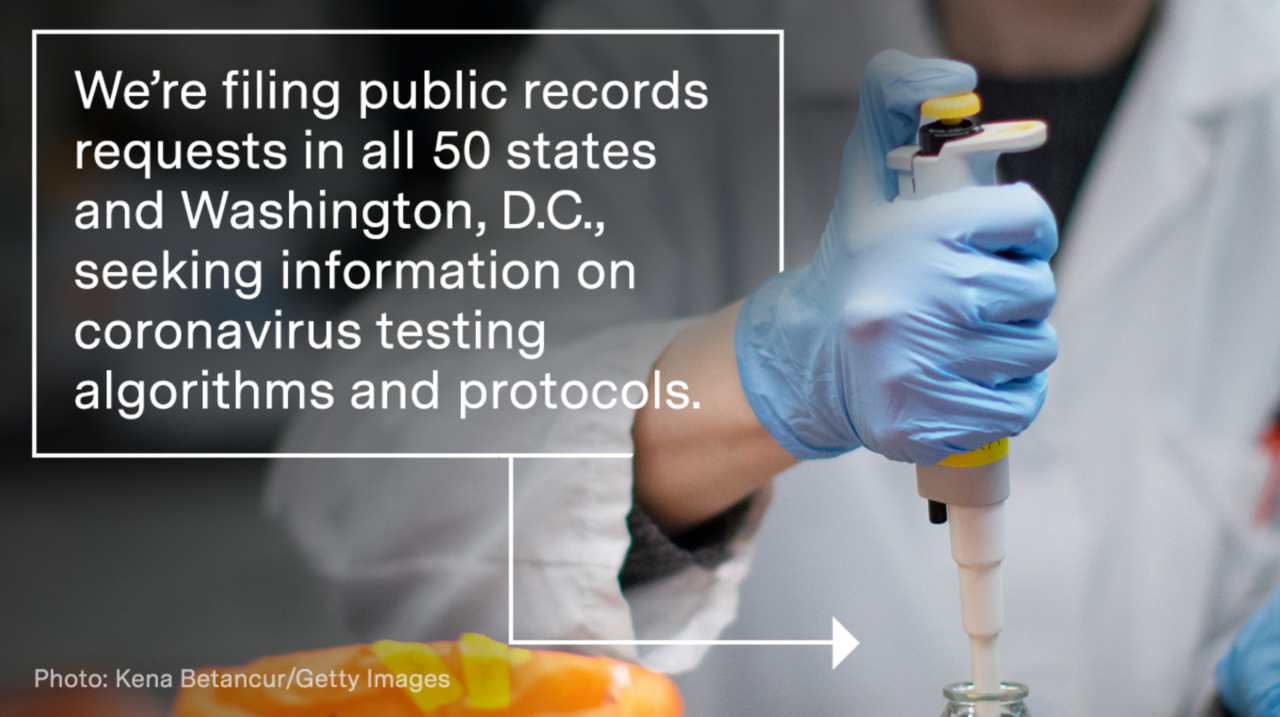Hello!
As you have probably noticed, we are obsessed with algorithms here at The Markup. And we have good reason: Algorithms are how we encode our political decisions into machines and protocols.
And nothing is more political right now than who gets tested for the coronavirus and who does not. Given the shortage of tests, and the lack of federal coordination, each state’s health department is setting its own rules about who is eligible for testing.
So this week The Markup reporter Colin Lecher filed public records requests in all 50 states and the District of Columbia for the algorithms they’re using to determine who gets tested for the virus.
We’ve already received one response, from Oregon, which provided us with a “provisional” guidance memo dated March 11 and later posted an updated memo on March 16 that allows health workers to send a test to the state lab for any patient meeting three criteria:
- Clinical need for admission to an inpatient facility;
- Evidence of viral lower respiratory infection; and
- Tested negative for influenza.
That differs from the guidance released by the CDC, which prioritizes patients already in the hospital—in order to trigger isolation protocols—rather than patients seeking admission. The CDC guidance also prioritizes older adults, immunocompromised people, and people who have traveled to known outbreak areas or been exposed to someone with a confirmed case.
But the decentralized nature of the U.S. health care system means that states are given wide latitude to develop their own protocols for combating a health emergency within their borders. So we expect to receive a wide variety of guidance from the states we have queried.
Of course, some states may not respond. North Dakota’s health department has already rejected our request, saying the records are “confidential.” We plan to appeal denials of our requests.
Of course, responses to our public records requests will not reveal the priorities of the many private labs and hospitals that are not subject to public records laws and make their own choices on testing—a practice that The New York Times found appears to privilege rich and famous people.
But we hope that our efforts will result in a data set of state algorithms that we can make available to the public. After all, that’s what we do at The Markup: We build data sets that we believe should exist in the world.
We hope that our data will be used by reporters and advocates across the nation, just as The COVID Tracking Project—a project led by Atlantic reporter Alexis Madrigal—has emerged as a comprehensive resource for keeping track of how many tests have been completed in 50 states, the District of Columbia, and five U.S. territories.
As testing expands, the data will reveal the scope of people infected and may help us find ways to slow the spread of the virus. We believe that citizens should be able to examine the ways their health department’s testing procedures may vary from neighboring states’.
If you have information about the algorithms, procedures, or tools that your state or locality is using to decide COVID-19 testing protocols, please contact Colin at colin@themarkup.org.
As always, thanks for reading. And please stay safe and healthy.
Sincerely,
Julia Angwin
Editor-in-Chief
The Markup
